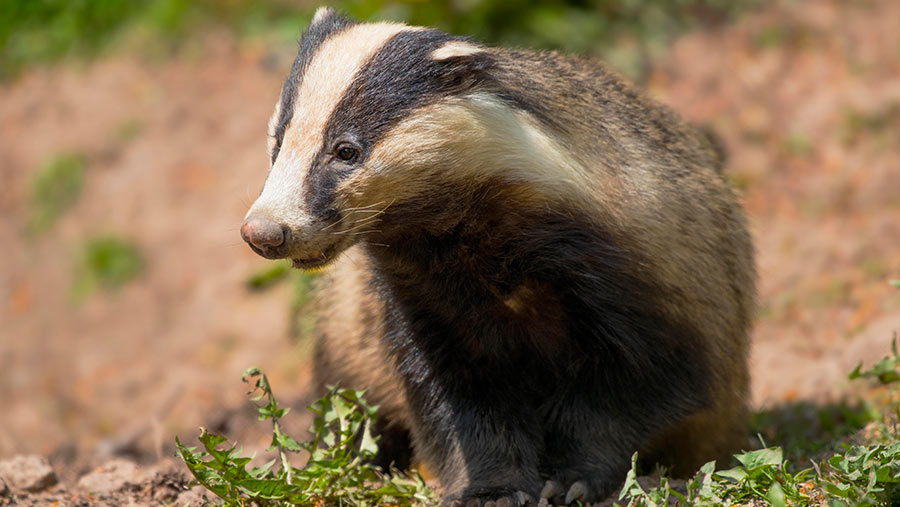Defra confirms no-cull zones around badger vaccination sites
 © Frank Sommariva/imageBROKER/Rex/Shutterstock
© Frank Sommariva/imageBROKER/Rex/Shutterstock Defra is to press ahead with plans to introduce “no-cull zones” around vaccination sites in the Edge Area in England, as it aims to balance culling badgers with vaccination in the drive to eradicate bovine TB.
The government said in its response to the consultation, which ran from 15 May to 26 June, it still supported the view that no-cull zones would help manage vaccination and culling in the Edge Area.
The zones aim to reduce the risk of culling vaccinated badgers that might otherwise wander into culling areas, while also reducing the chance of badgers from cull zones wandering into vaccination sites.
See also: ‘No-cull’ zones planned around badger vaccination sites
Among the concerns raised by farming groups in the consultation was the lack of evidence that vaccination was an effective method of disease control in badgers.
But the government said “no new scientific evidence has been presented to justify a change in our position that there is clear evidence that vaccination reduces disease in badgers”.
Larger area
The government stressed that, within no-cull zones, vaccination can still take place, in response to concerns that introducing the zones would lead to large areas where neither vaccination nor culling of badgers would happen.
Concerns were also raised by individual farmers that the proposals restrict their choice of what method of badger control to use on their land.
But the government said it wanted to seek a balance.
“For those fearful that the proposal would prevent future cull areas being licensed, we confirmed in the government’s response to the Godfray Review that epidemiologically driven culling will still be an option where surveillance in badgers and cattle indicates re-emerging or persistent infection.”
Responses
Defra received contributions from 1,994 respondents, including the NFU and the Badger Trust.
The majority of respondents from the farming and veterinary community wanted the policy focus to be on disease eradication and stressed their view of the importance of culling badgers in eradicating TB in cattle.
An NFU spokesperson said: “The NFU does not support the move to introduce mandatory no-cull buffers for vaccination sites within the Edge area because it is a step away from science and evidence-based policy. It seems inappropriate given the success of the culls, as seen in the latest peer-reviewed data in the Downs report.
“We’re disappointed to see the government proceed with this as we believe it will have the potential to disrupt farming’s ability to effectively control bTB. Instead, now is the time to build policy on the existing evidence and to stop giving a false equivalence to vaccination and culling when it comes to controlling this devastating disease.”
The majority of respondents from wildlife organisations wanted complete protection of vaccinated badgers from culling, with a large proportion stating that they were against culling in any part of England, although this was outside of the scope of the consultation.
Dominic Dyer, chief executive of the Badger Trust, said the responses showed the gulf between the two approaches is “wider than ever”.
He told Farmers Weekly: “It does show that there isn’t much common ground in relation to trying to find an exit strategy from culling.
“Conservation organisations like the Badger Trust are increasingly frustrated that we feel the government are not taking the opportunities badger vaccination offers to give farmers a choice about methods to deal with this disease.
“We still need to find common ground here and I feel the government have a role to play and that is something we will continue to press.”
Mr Dyer added that for any buffer zone to be viable, it would need to be in the region of 10km. The current government proposal is for the maximum width to be 2km and minimum 200m.
Claims government will increase culling
The government is planning a “significant expansion” of badger culling from September, according to a leaked document believed to have originated from Natural England.
Based on the document, the Badger Trust said it expects to see badger culling take place in 54 areas of England, stretching from Cornwall to Cumbria – up from 43 last year. This increase could result in more than 64,000 badgers killed in 2020, it suggests.
Defra said it does not comment on leaked documents and that no cull licenses have been granted this year. An update on the government’s bTB strategy is expected to be published in the autumn.
